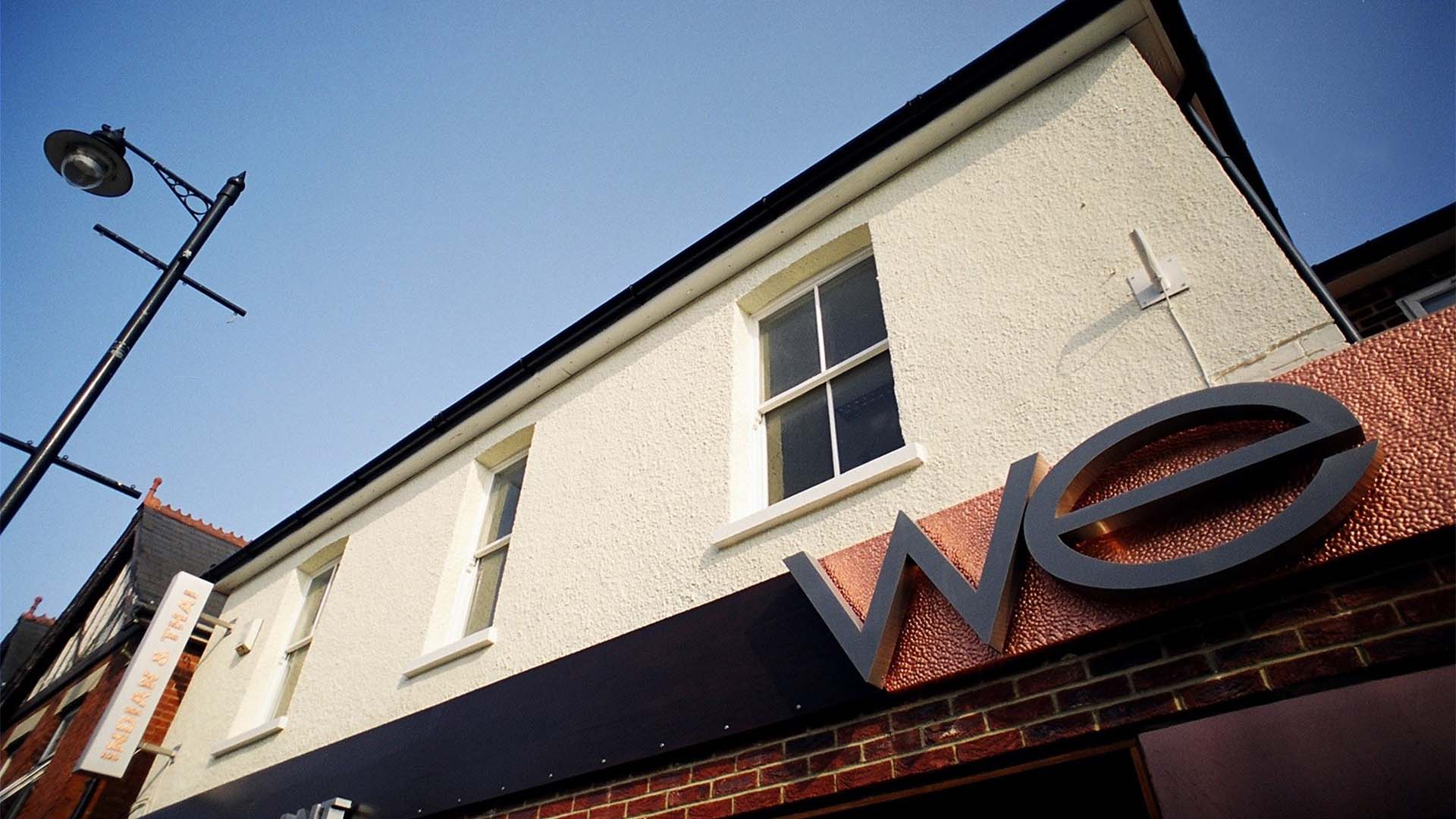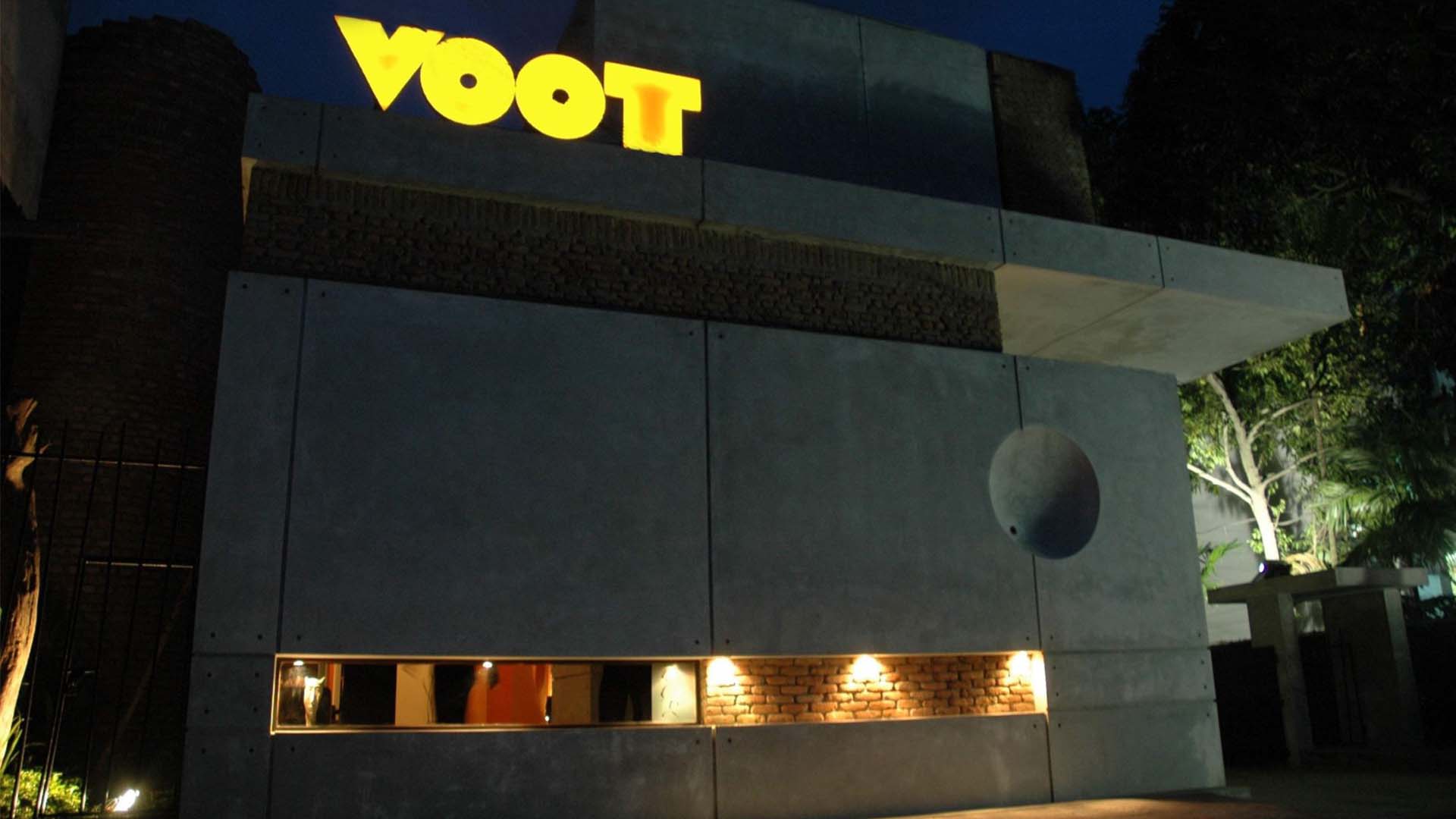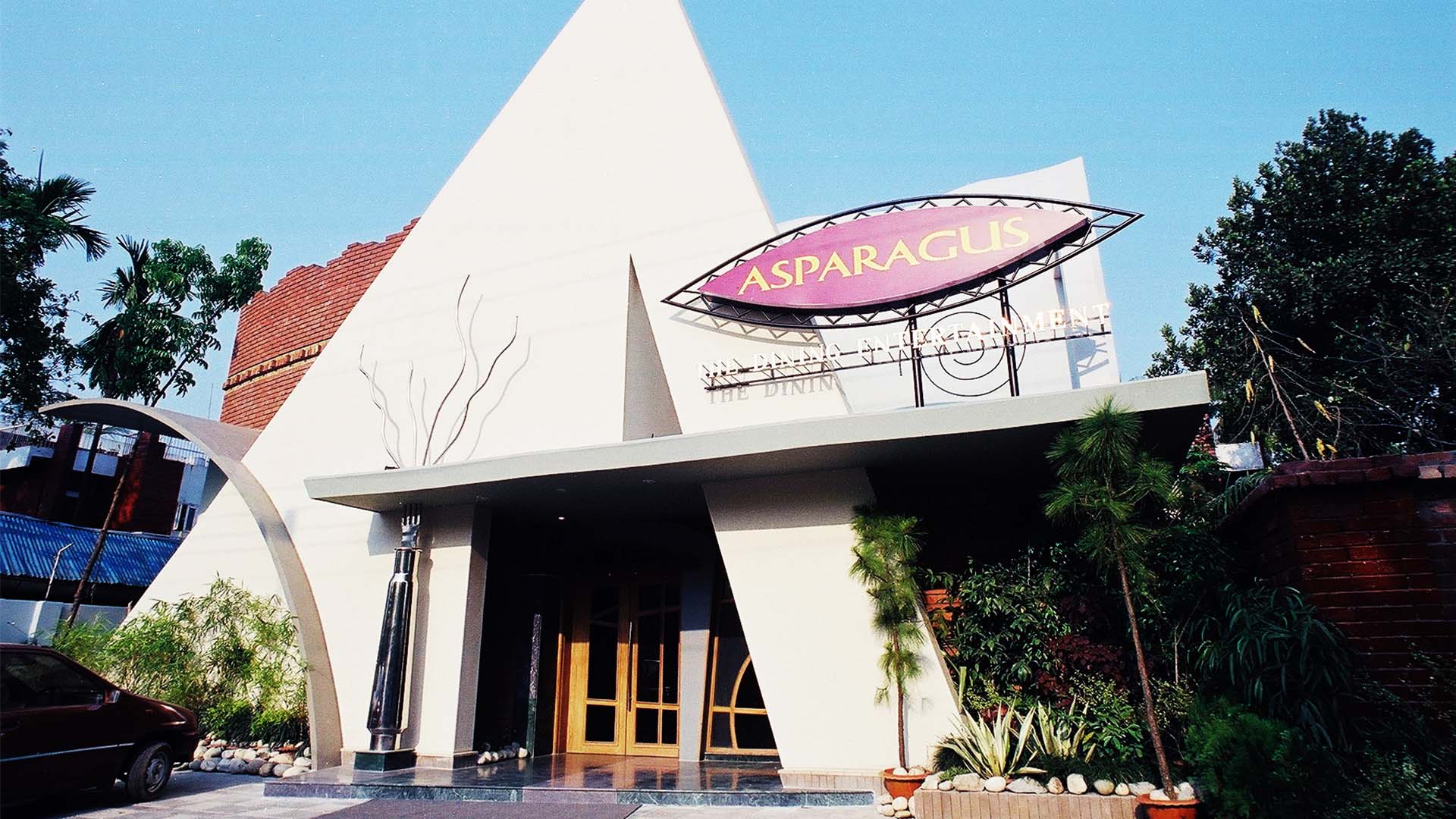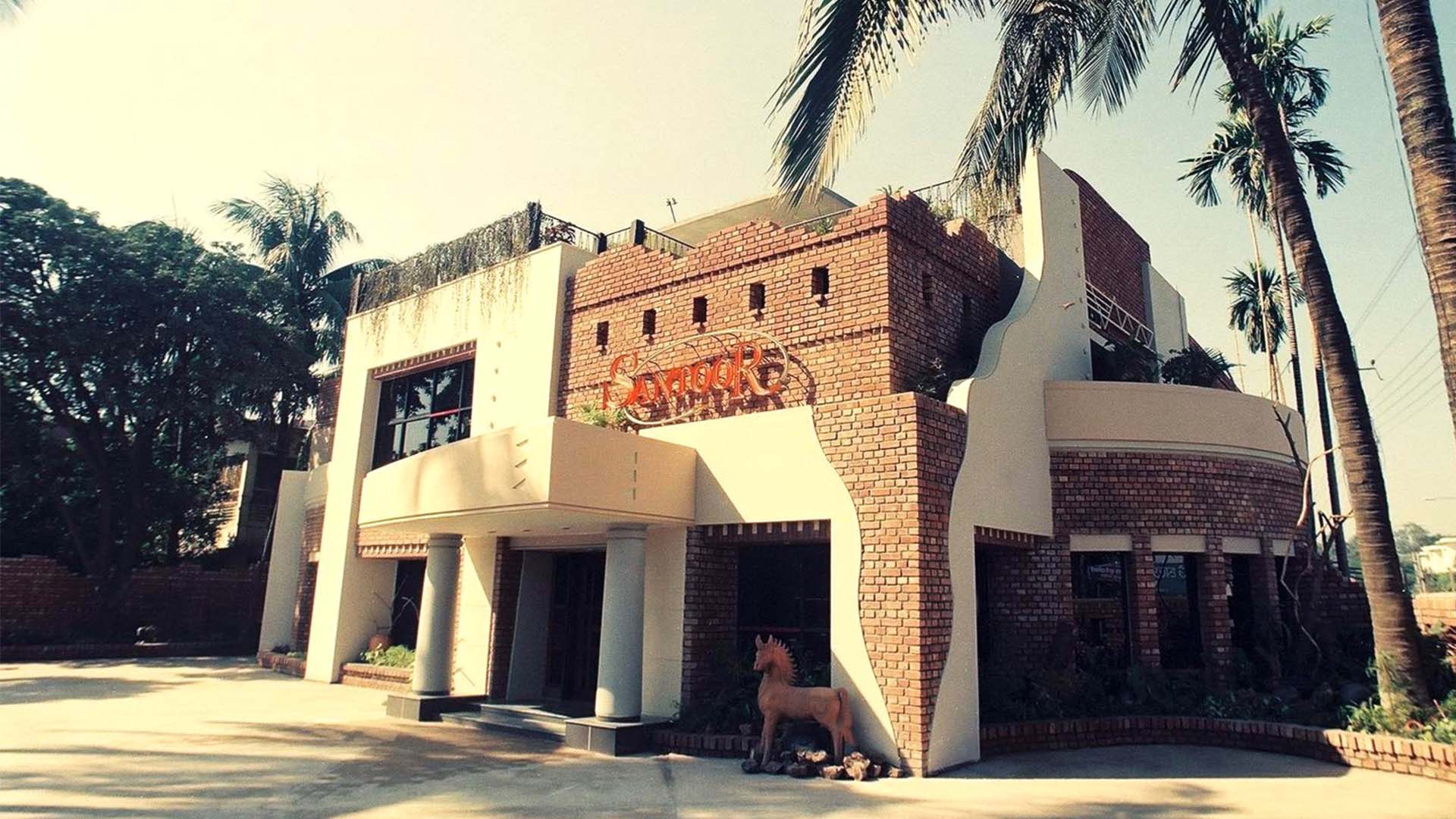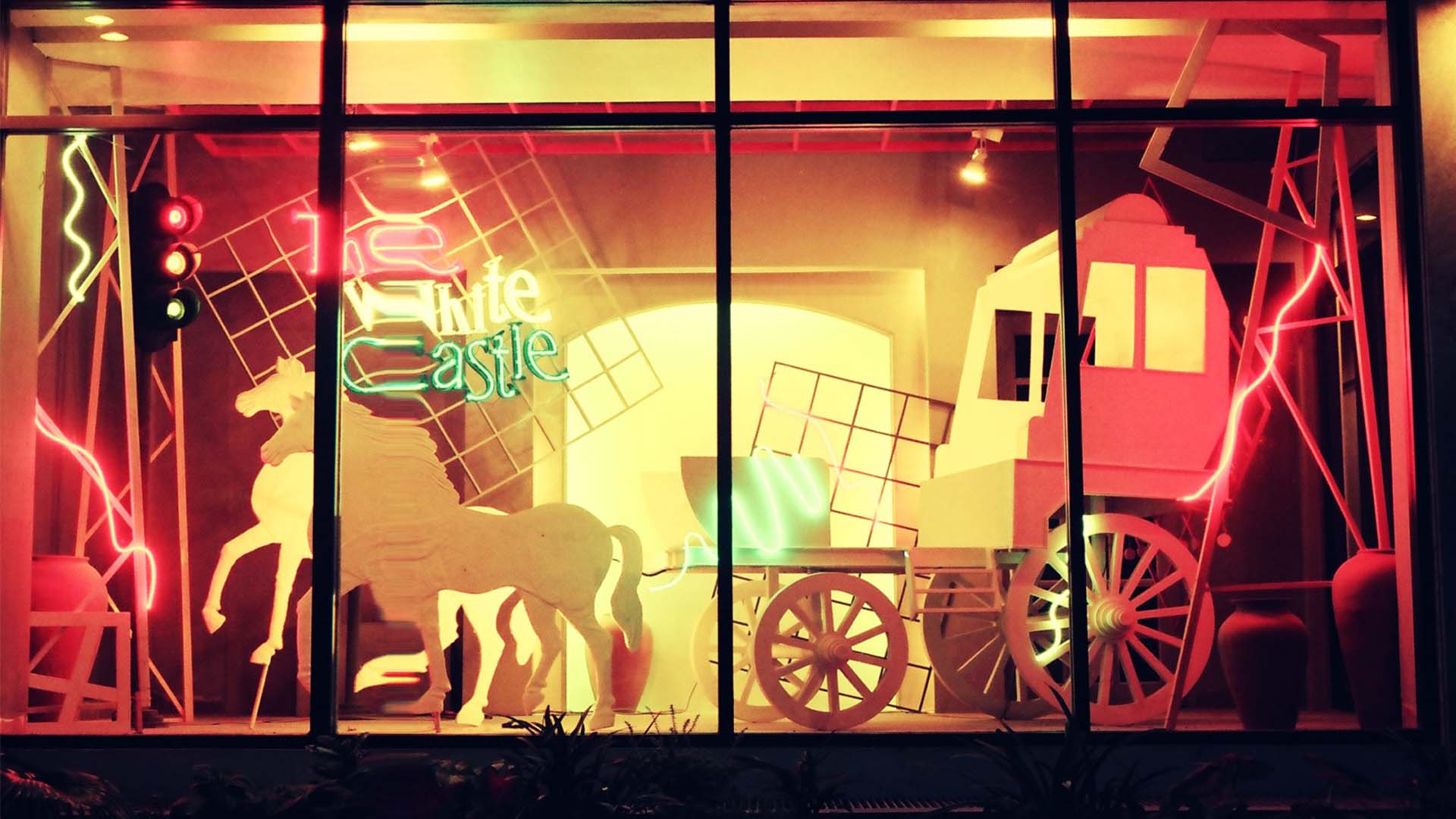A 2-storied residential building at the corner plot of Dhanmondi Road # 11, Dhaka, and offered as the space for the Restaurant didn’t necessarily speak out “Restaurant”. The house was originally built in 1961 and had been used for residence purposes mainly all through the years. At the end of May 1997, the entrepreneurs of SANTOOR decided to use the Ground Floor as a Restaurant while the 1st Floor would remain as it was.
The name of the restaurant SANTOOR given by the Architects himself comes from a musical instrument which itself starts the design theme. The theme of the Design may be described as a Contemporary Orchestration — a consonance or blend of the tradition and the contemporary.
The Project is an exercise of Renovation, Interior, and Landscaping integrating elements and motifs of Fine Art and Graphics. Starting from the logo the Architect has also designed the Menu, and the Dress Code and even selected the music, which would enchant the guests of the restaurant. It surely is an example of his total architecture creating a tasteful environment in totality. A reflection of Collage Work, the effort was to create a total environment by relating the exterior with the interior. A harmony of 2 and 3-dimensional graphics with a symbolic representation of the past meeting the future.
An attempt has been taken to give a feeling of serenity and sophistication to the exterior treatment of the building using a combination of detailed exposed brick details and delicately painted plastered surfaces. Also, an effort has been given to make the total outlook present a touch of welcome and a reflection of the delicate inside. The broken line of the wall façade parapet serves as a visually enveloping element. A total area of 460 sqm used as a restaurant area includes a dining area of around 130 people and other supporting facilities. The pantry and the kitchen area are on the backside.
There is a certain extent of madness; an effort to break away from what it should be using all kinds of materials translated into different media. But the whole idea was to offer the guests the scope to explore the excitement of a dramatic and playful environment.

